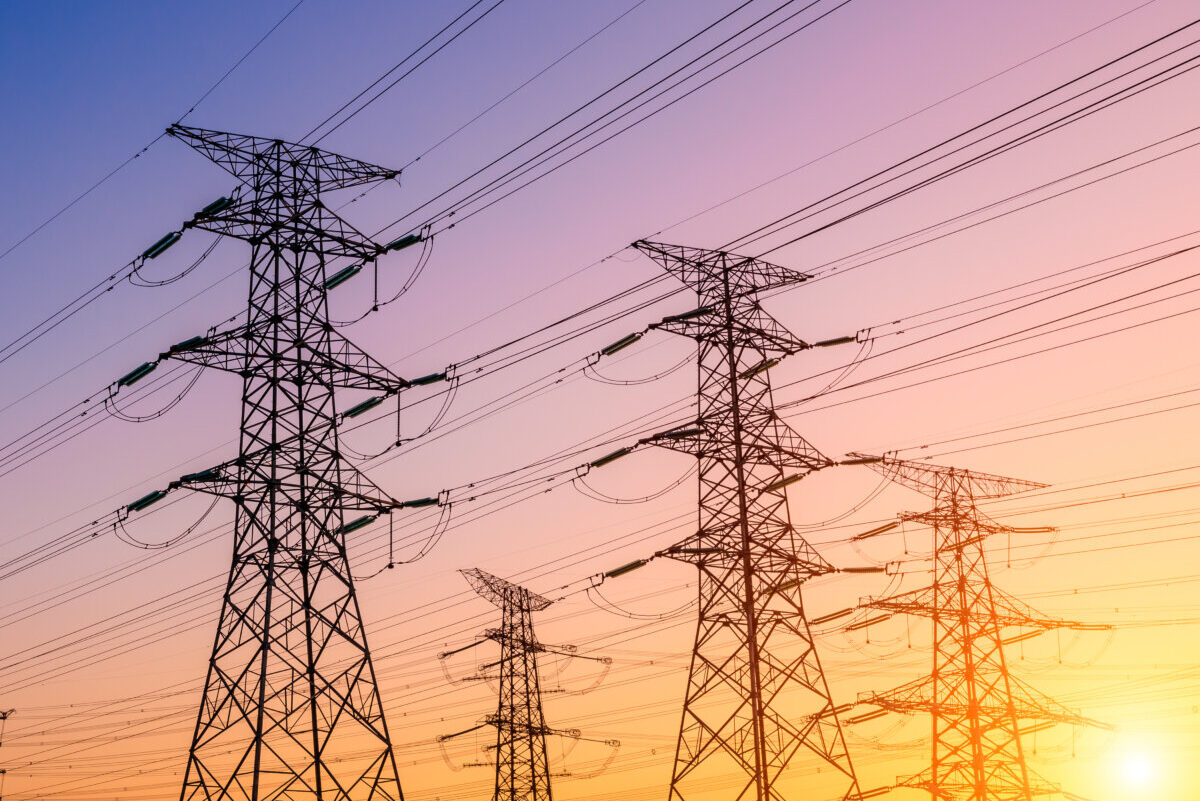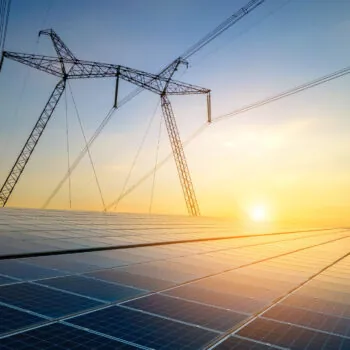This article was originally published in The 2021 energy crisis: Implications for China’s energy market and policies – Issue 131 of the Oxford Energy Forum by the Oxford Institute of Energy Studies in March 2022. Read the original here.
Power rationing is not uncommon in China. Provinces sometimes introduce rationing measures to regulate power demand, and at times they ration power to meet energy targets. These measures mostly affect industrial power users. What sets the 2021 power crunch apart is the scale of it and the impact on people’s livelihoods.
Restrictions were introduced in provinces generating 75 per cent of China’s GDP. Residential power was affected in the northeast, which led to incidents on roads and in factories, hospitals, and elevators in residential and commercial buildings.
The shortage also came against the background of months of government rhetoric and measures to curb energy use and carbon emissions. As a result, some blamed the country’s climate targets and policies as a cause of the power crisis.
Is climate policy to be blamed?
At the time of the 2021 energy crisis, the main policy targets that governed local-level energy and carbon performances were a five-year national carbon intensity target and the annual energy target (total-consumption and energy-intensity targets, commonly known as ‘dual control’ in China).
But these targets are not new. The dual-control system has been around since 2016, long before China put out its carbon peaking and neutrality targets. Every year, local governments are given targets they need to meet. The targets set for the provinces in 2021 were similar to the ones in previous years. In 2021, provincial governments were under no immediate pressure to introduce restrictions on power generation to achieve their 2025 targets on carbon intensity.
The central government did step up the enforcement of the energy targets in the context of reining in energy-intensive and polluting industries, driving ‘high-quality’ growth and the carbon peak and neutrality targets.
- Earlier in 2021, the NDRC (National Development and Reform Commission, China’s top economic planner) ramped up the naming-and-shaming campaign by publishing provinces’ performance on energy targets.
- NDRC said in mid-September that they will strengthen the use of energy targets in assessing the performance of provincial officials, which would affect their career prospects within the Chinese Communist Party (outlined in the Scheme to Refine Dual-Control of Energy Intensity and Total Energy Consumption, published by NDRC in September 2021).
While these measures added pressure on provincial officials to meet the energy targets, they were not the main cause of power rationing in all provinces. As the dust settles after the crisis, most analysts agree that China’s power crunch in 2021 was the result of a mismatch between supply and demand for coal, made worse by missing price signals, but not a result of insufficient coal capacity or of the effort to meet new climate targets. Reliance on coal, as the power crisis has exposed, is no guarantee of energy security. As geopolitical tensions between China and the West rise, China’s coal imports will be increasingly vulnerable to supply chain disruption, which is likely to be exacerbated by extreme weather incidents driven by climate change.
What has changed since the crisis?
The central government has put into place a flurry of administrative and fiscal measures to boost coal supply in response to the crisis. Among these measures, the reform of coal power pricing tackles the root cause of the crisis and is likely to be consequential in driving China’s energy transition.
In October, China’s top economic planner announced measures to speed up the liberalization of the power market. All coal power utilities are required to sell their power through the wholesale market with no price guarantee. Generators are also allowed to pass through part of the cost to commercial and industrial users by setting power prices within a ±20 per cent window anchored to a base price. This means that coal generators, unlike during the onset of China’s recent power crunch, do not necessarily have to operate at a loss at times of high fuel prices.
This new pricing mechanism, despite safeguarding coal power generators’ ability to remain profitable in the short term and at times of coal price hikes, should make coal less competitive against solar and wind power over the long term. The reformed system means market players are less exposed to the uncertainties of a market with regulated electricity pricing but market-based coal prices. Better price signals could motivate end-users to invest in energy efficiency measures.
The power crunch is also changing the role of the dual-control energy targets as a tool in driving China’s energy and climate objectives. The rigidity of the dual-control policy has been blamed as the cause of the occasional ‘self-inflicted’ power shortages towards year-end as local officials rushed to meet annual targets by switching off the power supply.
In September 2021, the government started loosening the rules so that certain renewable energy addition will not be counted towards provinces’ annual total energy consumption targets. This incentivizes provinces to meet their rising energy demand with renewable instead of fossil power sources. Since the power crunch, Beijing has doubled down on this initiative, by stating categorically that renewable energy should be excluded in the current system of absolute energy consumption targets.
The limitations and the perverse incentives of the energy targets policy, laid bare by the 2021 power crisis, will shape how policymakers design the system to enforce the country’s climate targets. Ahead of the crisis, the country’s top economic planner declared the dual-control energy targets as a ‘key entry point’ in delivering the country’s carbon neutrality target. In December 2021, at the top government economic conference after the peak of the crisis, however, the transition from ‘dual energy control’ to ‘dual carbon control’ (total emissions and emissions intensity targets) was agreed as a priority in driving carbon emissions reductions.
China is likely to introduce a national carbon cap in the next five years, an idea first floated in the country’s 14th Five-Year Plan, published in March 2021. The new carbon targets should feature more flexibility than the existing energy dual-control policy, as officials have been urged by Beijing to avoid ‘simple top-down allocation’ in designing the climate targets. Some energy experts believe that the national cap will be developed in a bottom-up fashion by aggregating provincial targets that are set based on local circumstances. The carbon cap could be implemented through the national carbon market with a gradual decrease in the number of allowances.
Political signals
The power crunch has raised the political salience of energy security in China. Chinese leaders have since struck a more cautious tone when referencing the country’s climate policies, highlighting the need to safeguard the security aspect of the energy transition. Ensuring energy security per se is not contradictory to China’s climate objectives, as rising renewable energy capacity could free the country from dependency on oil and gas imports. But the recent crisis, which was not driven by disruption of energy imports, has led policymakers to focus their minds on domestic energy security and stress the ‘centrality of coal in China’s energy resource endowment’.
Similar references to coal were included in the country’s road map to peak emissions in 2030, published during the height of the energy crisis. Language in the road map regarding coal power expansion was reportedly added at the last minute, although it was unclear whether it was linked to the power crunch. The concept of ‘decarbonizing securely’ was raised for the first time in the ‘1+N’ document, the overarching guiding document for China’s long-term climate policy, published in late October. The ‘1’ refers to the ‘working guidance’ that sets out the overarching principles of all forthcoming policies that aim to facilitate China’s peaking and neutrality goals. The ‘N’ refers to a ‘2030 carbon peaking action plan’ and a series of forthcoming plans that will lay out sectoral policy road maps and targets.
An emphasis on energy security based upon coal is hardly a step forward in China’s climate policy, but the language underscores the sense of unease among policymakers as they balance the short-term need to keep the lights on and the country’s long-term climate aspirations.
Since China’s power crunch, the government has also introduced a series of regulatory and financial incentives for the coal mining and power sectors. These include a CNY 200 billion ($31.3 billion) lending program for ‘clean and efficient’ coal, roughly what the Bank of China invested in coal power and mining between 2016 and 2020. Projects such as coal plant retrofits, industrial boiler upgrades, coal washing, and coal-bed methane capture would be eligible for funding under this new programme.
The renewed focus on energy security could be seized upon by coal industry incumbents that are seeking to delay the transition, while the short-term measures to boost ‘clean and efficient coal’ could throw another lifeline to the coal industry.
Coal researchers and industry associations alike have already taken the opportunity to call coal the ‘bedrock’ of a secured energy system, urged policymakers to proceed with a ‘coal phase-out’ with caution as it would ‘not be compatible with the country’s energy strategy’, and warned that a rapid coal phase-out would make power blackouts ‘larger and deeper than 2021’ and more frequent.
Nevertheless, the power crisis in 2021 is unlikely to impact China’s long-term climate ambition. The new funding programme on clean coal was launched side-by-side with a low-cost loan programme by China’s central bank to support low-carbon projects, including the installation of renewable energy, smart grid, and carbon capture technologies. Climate change remains one of the key economic priorities for China in 2022, listed alongside ‘common prosperity’ and managing financial risks in the readout to the government’s annual economic planning meeting. In his speech to the World Economic Forum 2022, Chinese President Xi Jinping declared that China’s approach to energy transition is centred on the principle of ‘phasing out the old and bringing in the new’, potentially a veiled swipe at industry voices advocating to put brakes on the phase-out of coal. China did play a central role in the last-minute diplomatic wrangling to water down the language on coal in the Glasgow Climate Pact, insisting that it would stick to the ‘coal phase-down’ language used in domestic policy instead of the more ambitious ‘phase-out’. But in signing the Pact, China for the first time acknowledged coal power generation as the specific target of a ‘phase-down’, instead of its previous more general references to overall coal consumption in domestic policies. At Glasgow, Beijing also pledged to ‘make best efforts to accelerate’ the phase-down of coal consumption in the US–China Glasgow Declaration. While these do not represent major progress, Beijing appears to have inched forward on its position on coal amid the power crisis.
What to watch in 2022
In the end, the impact of the power crunch on the pace of China’s clean energy transition will be determined by actions, not words. Policymakers in Beijing will be making some hard policy choices in 2022 to balance energy security and climate objectives while countering the political headwinds from incumbents in the power sector and international climate diplomacy.
Targets, policies, and pace of change advocated by the energy sector plans as part of the 1+N and 14th Five-Year Plan policy frameworks, to be published in 2022, will determine how much longer coal will remain in China’s energy mix in the power system. Research institutes affiliated with industries have argued that a 150 GW expansion of coal capacity is necessary to safeguard China’s energy security. But independent analysis has shown that capping China’s coal capacity at 1,100 GW by 2025 (53 GW more than currently operating) will allow China to meet its future energy demands.
Increasing the flexibility of coal power plants—transitioning existing plants’ role from serving base load to peak load—is crucial in ensuring an orderly phase-out of coal while safeguarding energy security. Measures to subsidize flexibility retrofits and strategic backup capacity could encourage local economic planners to meet energy demand with existing instead of new coal capacity. Some of these measures, including a ‘capacity compensation mechanism’, have been raised in a recent government document on power market reform in response to the power crisis, but are yet to be taken forward.
China accounts for 55 per cent of the world’s pre-construction pipeline of coal-fired power plants and is under increasing pressure to end the construction of new coal power plants and to put an expiry date on coal in its power system. In 2021, the ‘no new coal’ movement picked up internationally with more than 60 countries committing to stop building new coal power. Major coal users in the developing world, including Vietnam and Indonesia, both Chinese neighbours, have noticeably stronger commitments than China on coal after signing on to the Coal to Clean pledge at COP26. This divergence is likely to cast a shadow over China’s attempt to paint itself as a climate leader internationally going into COP27, and will also play a part in Beijing’s calculus on its strategies to phase down coal.


